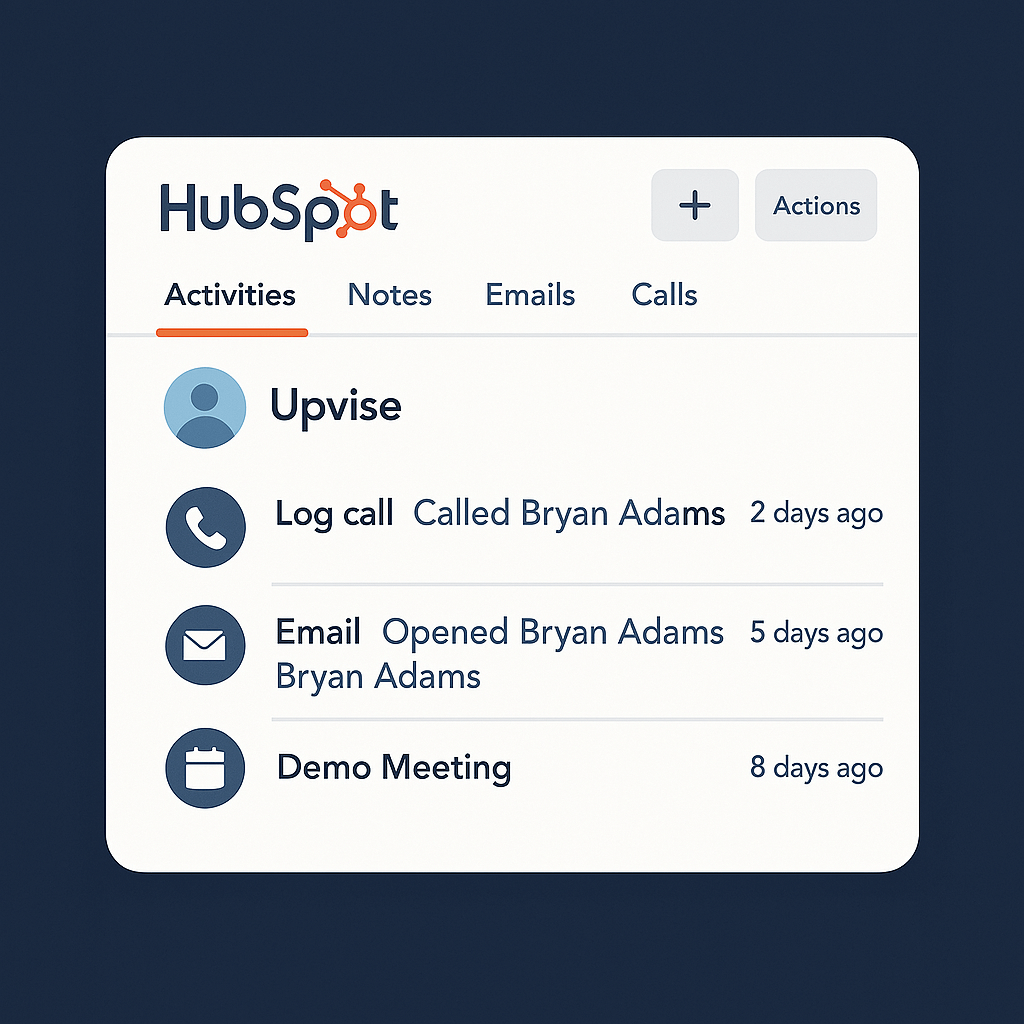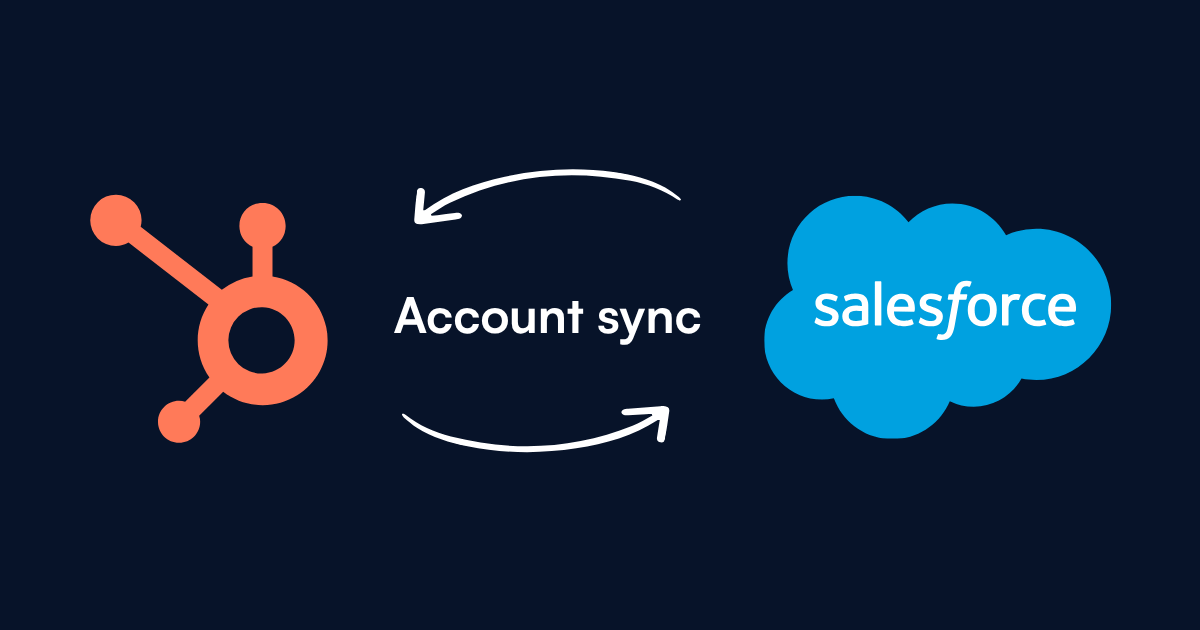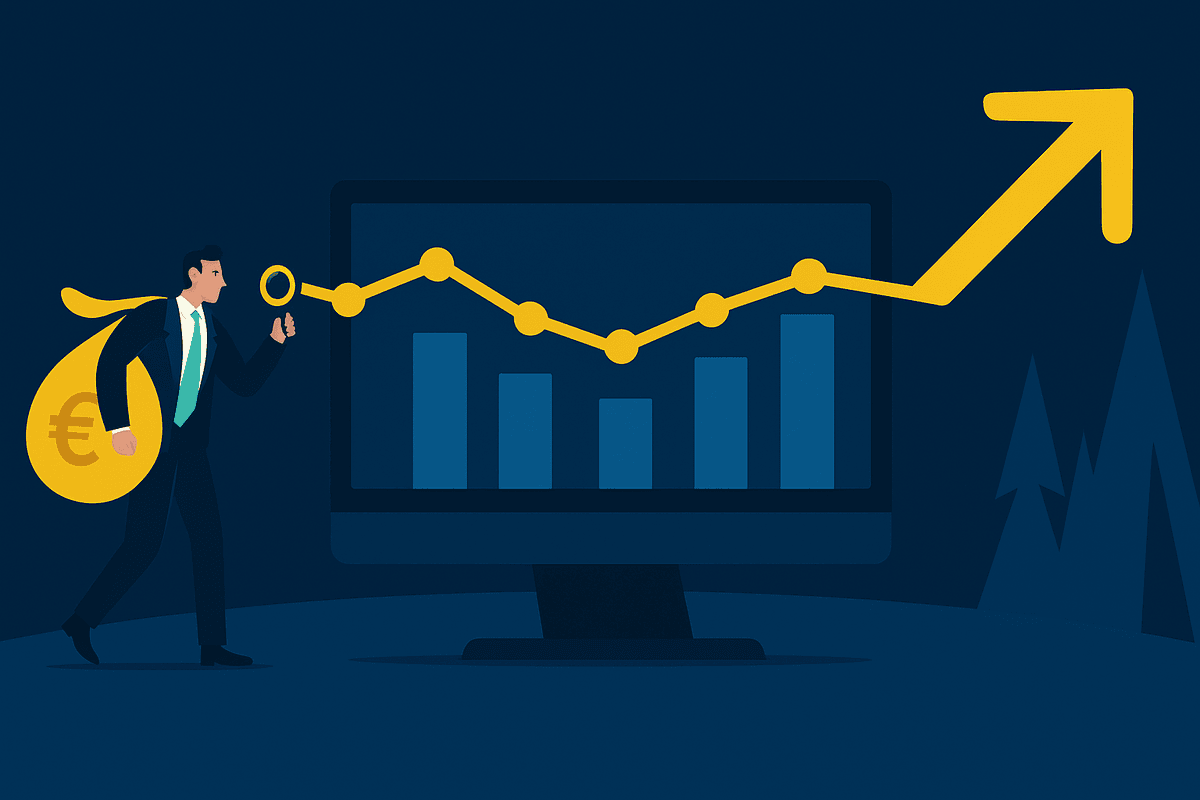
How Many Touchpoints Does a B2B Customer Make Before a Purchase?

Contents:
I often joke that I spent more time choosing my last toothbrush (a quick 5-minute debate on Amazon) than some companies spend deciding on enterprise software. Buying a toothbrush is easy. You read maybe one review and click “Buy Now.” Buying B2B software, on the other hand, can feel like a marathon of meetings and emails. As a CRM and RevOps consultant, I’ve seen this complex journey up close. Let’s talk about how many touchpoints a B2B customer actually goes through before making a purchase, and why it feels like so many (because it is so many).
Marketing-Driven Touchpoints in the B2B Customer Journey
In the early stages of a B2B customer journey, marketing usually does the heavy lifting. Long before a sales rep gets involved, your prospect is out there self-educating and engaging with your marketing assets. (In fact, depending on who you ask, 70-80% of the buyer’s journey might happen without any sales involvement at all.) From awareness to consideration, here are some common marketing-driven touchpoints that kick off a B2B sales cycle:
- Online Ads and Social Posts: A potential buyer might see a targeted LinkedIn ad or a Google search ad for your product. This could be the very first touchpoint that puts your company on their radar.
- Content Consumption: They click through to read a blog post or watch a thought leadership video. Maybe they download a whitepaper or an e-book from your website. Each piece of content consumed. Whether it’s a case study, a webinar recording, or a podcast episode, is another touchpoint building their awareness and trust.
- Website Visits and Email Nurturing: That same prospect might visit your website multiple times and possibly sign up for your newsletter. Now your marketing emails become additional touchpoints, keeping your brand in their inbox and mind.
- Events and Webinars: Don’t forget the offline or virtual events. Perhaps they swing by your booth at an industry conference or attend a webinar your team hosts. These event interactions are key touchpoints that often signal a deeper interest, since the prospect is investing their time to engage.
- Reviews and Social Proof: A savvy B2B buyer will often check out third-party review sites (think G2, Capterra) or read testimonials and case studies. These indirect marketing touchpoints, hearing from your happy customers, can strongly influence their opinion before ever talking to you directly.
Marketing-driven touches like these can number in the dozens for a single prospect. I’ve had clients discover that leads often consumed 10+ pieces of content and interacted with countless ads or emails before they became a hand-raise (e.g. filling out a demo request). In other words, by the time a salesperson says “hello,” the buyer might have been quietly nurtured through weeks or months of marketing touches. Marketing’s role here is to educate and build trust early on, so that when sales steps in, the buyer is primed and informed.
Sales-Driven Interactions: The Human-to-Human Moments
Once a prospect is qualified (or inquisitive enough to talk), the sales-driven touchpoints kick into gear. Now it’s person-to-person time - but don’t be fooled, this stage adds many more touches to the journey. B2B sales cycles are long for a reason: buyers need multiple interactions to feel comfortable, and there are usually many stakeholders involved. Based on my experience, here are typical sales-driven touchpoints that occur before a B2B deal is won:
- Personal Outreach: The first sales touch might be a cold outreach email or call from a BDR/SDR, or simply a follow-up to that demo request the prospect submitted. It often takes several calls and emails just to connect and schedule an initial meeting! Yes, playing “phone tag” with a prospect counts as multiple touchpoints!
- Discovery & Needs Assessment: Next comes a discovery call (or two). In this meeting, the sales rep digs into the prospect’s needs. This might be followed by an emailed summary or additional resources. Every call and follow-up email here is another touch.
- Product Demo and Meetings: A product demo is usually a major touchpoint, sometimes done live over Zoom, other times in-person. Often, multiple people from the buyer’s side join (their technical lead, their manager, etc.), which actually multiplies the touchpoints (one meeting, but several attendees each having their own experience). It’s common to have a series of meetings: an initial demo, then a deeper technical demo, maybe a session with the prospective user team to answer detailed questions. Each is a distinct touch.
- Proposal & Negotiation: After the demo stage, the sales process might involve sending a proposal or quote and that’s not the end. There will be follow-up calls to walk through the proposal, perhaps an ROI analysis meeting to justify the cost, and often negotiation communications. If the prospect’s procurement department gets involved, add more touches (emails back-and-forth on legal/security reviews, etc.). I’ve seen deals where simply ironing out the contract terms added a half-dozen interactions.
- Stakeholder Check-ins: Throughout the sales cycle, a good sales rep stays in touch. They might have check-in calls (“Just touching base to see if you have questions”) or might need to do a reference call where the prospect speaks to one of your existing customers. Each interaction, no matter how brief, is part of the journey.
By the time we reach the final “yes”, the collective effort from the sales side can easily be 10, 20, or more touchpoints per prospect. I often look at the activity log in CRM for a closed deal and see a long list of calls, emails, meetings, LinkedIn messages - you name it. It’s a reminder that closing a B2B sale is rarely a one-call close. It’s more like a slow courtship: multiple conversations building the relationship and addressing every concern. And remember, most of these touches aren’t happening in a neat linear sequence; some stakeholders might be entering the picture late and asking to “catch up” on info the salesperson already provided, which means the salesperson might retrace steps, share materials again, or set up repeat demos for new folks. (Yes, doing essentially the same demo twice for two different stakeholder groups is a thing, and it’s two separate touchpoints.)
How Many Touchpoints Does A B2B Customer Journey Have?
So, how many touchpoints does it take to close the average B2B deal? If you’ve been keeping score, the numbers are adding up fast. It’s not the classic “seven touches” that old marketing folklore suggested. In reality, B2B customer journeys involve dozens upon dozens of touches spread over several months and numerous channels. Both marketing and sales contribute to this tally in different ways, but it’s the combination that ultimately gets the buyer across the finish line.
In fact, recent research from Dreamdata backs up what many of us have felt anecdotally. On average, a B2B customer might have around 62 touchpoints on their journey to purchase, over a span of roughly 6+ months. And within the buying company, you’re typically dealing with 6 or more stakeholders (decision-makers, influencers, users) who all have to sign off or at least nod along. Think about that: half a year, six people, 60-something interactions. No wonder the process feels like a maze!

From my perspective, it’s actually amazing that deals close that quickly given all the moving parts. You have marketing generating awareness and nurturing interest across various channels (the buyer’s reading your content, hearing about you on LinkedIn, seeing your brand at an event), while simultaneously sales is engaging one-on-one, guiding the evaluation, and addressing concerns. These threads intertwine. Often, I’ve seen a scenario like this: a champion at the target company engages with marketing content for a couple of months quietly. Once sales engages them, that champion then invites a VP or an IT colleague into the conversation. What do those new folks do? They start their own mini buyer’s journey maybe googling your product, reading reviews, downloading a whitepaper - essentially additional marketing touchpoints happening mid-sales cycle. Meanwhile, the sales rep is continuing to have meetings and email threads with each stakeholder. The total touch count piles up across all these parallel mini-journeys within the account.
The B2B buyer journey is rarely a straight line; it’s more like a plate of spaghetti (like the Gartner image at the top of the post) tangled, with people entering and exiting the process at different times, looping back to revisit content, and occasionally pausing (have you ever had a deal go dark for a month and then suddenly re-ignite? I have, the buyer often was internally regrouping, which is its own flurry of touches we don’t see). The key takeaway here is that marketing vs. sales touchpoints isn’t a competition, they’re complementary. Marketing and sales together create the full tapestry of engagement. If either side tries to claim a deal was “all us,” they’re missing the big picture. In B2B, every touchpoint matters because you never know which interaction or piece of information will tip the scales for a stakeholder on the fence. It’s a team effort (with the “team” including your website, your ads, your sales team, your customer stories, and more).
By embracing the messy reality of this journey, you can plan better. Expect that a prospect might need multiple business cases and ROI discussions (sales touches) and multiple reassurance moments like seeing customer testimonials or analyst reports (marketing touches) before they feel confident to buy. When I approach RevOps planning for a client, I assume the journey will be long and nonlinear, that mindset prevents unpleasant surprises when a deal takes 7 months instead of 3, or when an extra decision-maker joins late and needs special attention.
Wrangling the Touchpoints with the Right CRM
Given this complexity, one of the most important questions for a B2B organization is: How do we keep track of all these touchpoints? When you have 62+ interactions happening over half a year with six different people, it’s dangerously easy for things to slip through the cracks. (Ever realized after a deal was lost that the prospect had actually attended your webinar and you didn’t even know? It’s not a good feeling.) This is where having a solid CRM for B2B buying comes to the rescue.
As a consultant, I can’t overstate this: a good CRM system (like HubSpot, Salesforce, or your platform of choice) is the command center for managing a complex B2B sales cycle. It’s not just a fancy Rolodex of contacts. It should be the place where every single touchpoint is recorded and visible to your team. Marketing emails and website visits feed into it, sales call notes and meeting logs live there. It’s the shared brain that keeps marketing and sales aligned. Here’s how leveraging a CRM helps tame the chaos:
- Unified View of the Buyer’s Journey: A CRM lets you see the timeline of interactions in one place. The sales rep can look before a meeting and notice, “Oh, this lead downloaded our pricing guide last week and opened our last three nurture emails.” That insight might change how they approach the conversation. Without a CRM capturing marketing touchpoints, sales would be flying blind.
- Tracking Multi-Stakeholder Engagement: Remember those 6+ stakeholders? In a CRM, you can associate all the individual contacts with the same company or deal. This way, you see a fuller picture: maybe Person A watched the demo recording, Person B asked for a security document, and Person C (the boss) has been quietly forwarding your case study PDFs around. When it’s all logged, the account executive can strategize the next move with the whole buying committee in mind.
- Analytics and Improvement: Once you close (won or lost), you can analyze the touchpoint data. Perhaps you find that deals that include an early webinar touch (marketing) followed by a quick demo (sales) close faster. That’s pure gold for optimizing your process. Or you might discover certain content pieces rarely get touched at all in won deals, indicating they’re not useful. A CRM, combined with reporting tools, empowers these kinds of analyses. It’s much easier to refine your marketing and sales tactics when you actually have the data on what happened in successful vs. unsuccessful journeys.
- Coordination and Handoff: A well-used CRM ensures that when marketing hands off a lead to sales, nothing gets lost. Sales can see the lead’s entire engagement history to date. And if the sales cycle pauses and marketing picks the lead back up for further nurturing, they know exactly what was discussed in the sales meetings. This alignment keeps the experience consistent for the buyer (and saves your team from embarrassing moments, like sending a “See our product!” ad to someone who’s already deep in negotiation. It happens without coordination).
At the end of the day, managing the long B2B customer journey is about being proactive and organized. You can’t shorten the journey by wishing it so, but you can make each touchpoint count and ensure you’re not dropping the ball at any stage. That’s incredibly empowering once you grasp it. Instead of feeling overwhelmed by the 6-month, 62-touch marathon, you start to approach it strategically: How can we guide the buyer from one stage to the next? What content or conversation will help unblock the path? With the right processes and a robust CRM tracking everything, you gain visibility into this labyrinth and can navigate it with confidence.
In conclusion, if someone asks me, “How many touchpoints does it really take for a B2B customer to buy?”, I’ll smile and say, “As many as it takes, and usually a lot more than you think!” But I’ll also add that knowing this upfront is half the battle. When you acknowledge that a B2B sales cycle is a long, multi-touch journey, you set yourself up to excel at it. You stop hoping for quick wins and start orchestrating a cohesive experience across marketing and sales. And when those touchpoints are tracked diligently in your CRM, you won’t need to rely on guesswork or gut feel. You’ll have the data and history to inform every decision. In the end, the companies that win are usually not the ones with the fewest touchpoints, but the ones that deliver the right touchpoints at the right times. So embrace the complexity, arm yourself with the tools to manage it, and you’ll guide your buyers through that epic journey to a successful finish line. Happy selling (and don’t forget to replace that toothbrush occasionally too)!
Frequently Asked Questions
Expect 6 to 7 stakeholders on average. These might include end-users, team leads, finance, IT, procurement, and executive decision-makers — each needing tailored information and reassurance
A CRM like HubSpot or Salesforce helps track every interaction across teams, giving you a single source of truth to analyze, coordinate, and improve your funnel strateg
On average, a B2B buyer will go through 62+ touchpoints before making a purchase — across at least 3 channels and involving multiple people from the buying committee.
From first anonymous touch to signed contract, the average B2B journey takes about 6 months. For larger companies, it can stretch to 8+ months or more.
Recent resources

What is a CRM system and How Can it Actually Make Your B2B Sales Process More Efficient?














